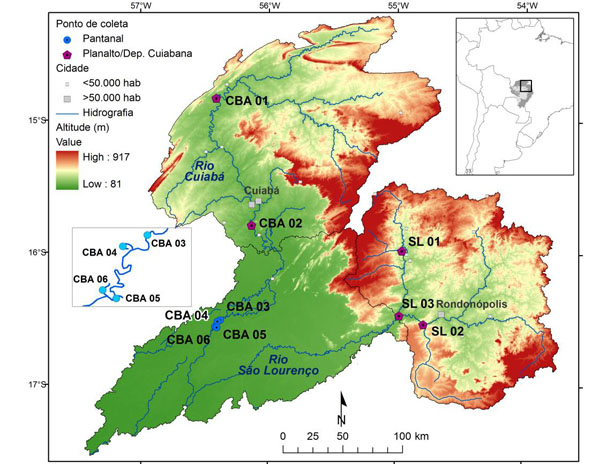Water Quality and Trophic State indices at the Dr. João Penido Dam (Juiz de Fora, MG, Brazil)
Keywords:
trophic state, water source, monitoring, integrated management plan, water quality index
Abstract
The Dr. João Penido Dam contains the reservoir that is the main source of drinking water for the city of Juiz de Fora, located in the southeastern region of Brazil. It was built in in 1934 and has since suffered from the misuse and occupation of the land that surrounds it. This study sought to characterize the reservoir’s water quality and to correlate our results with land use. Accordingly, we performed physical-chemical and microbiological analyses of water samples in order to measure the following parameters: water temperature, dissolved oxygen, pH, turbidity, total solids, biochemical oxygen demand, nitrate, total phosphorus, chlorophyll a and thermo-tolerant coliform. The results were compared with Resolution 357/2005 of the National Environmental Council (CONAMA), and it was found that the dissolved oxygen, pH, turbity, total phosphorus and biochemical oxygen demand were not in conformity. We also calculated the Water Quality Index (WQI) and Trophic State Index (TSI) for the all of the samples and found the water to be in a predominately “mesothrophic” state and the water quality level to be “medium.” This suggests that occupation and the forms of use of the watershed have negatively impacted the aquatic ecosystem. Monitoring has proven itself to be a critical tool, providing subsidies for the development of an integrated management plan for the preservation and restoration of the quality of the reservoir.
Published
21/03/2014
Issue
Section
Papers
Authors maintain the copyrights for their work. However, they grant rights of first publication to Ambiente e Agua - An Interdisciplinary Journal of Applied Science. In compensation, the journal can transfer the copyrights, allowing non-commercial use of the article including the right of sending the article to other data bases or publication media. The journal uses the CC BY 4.0 license"






